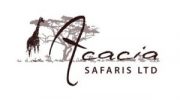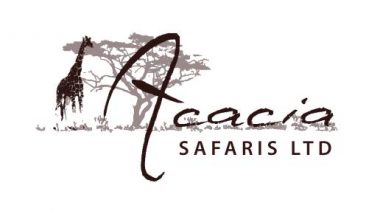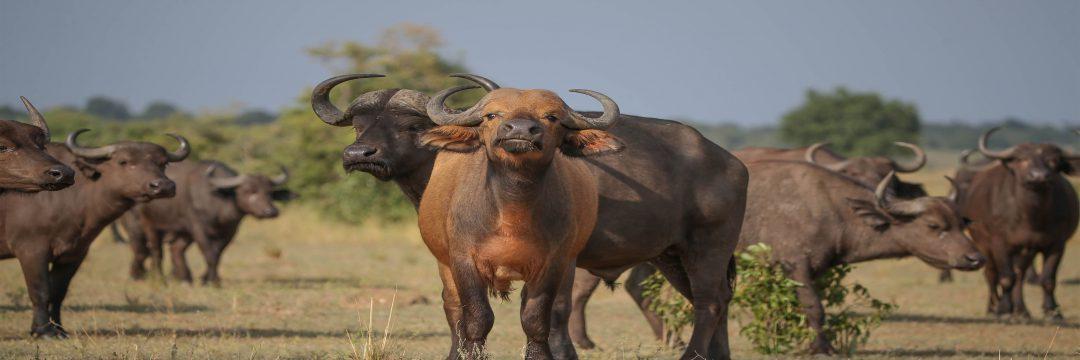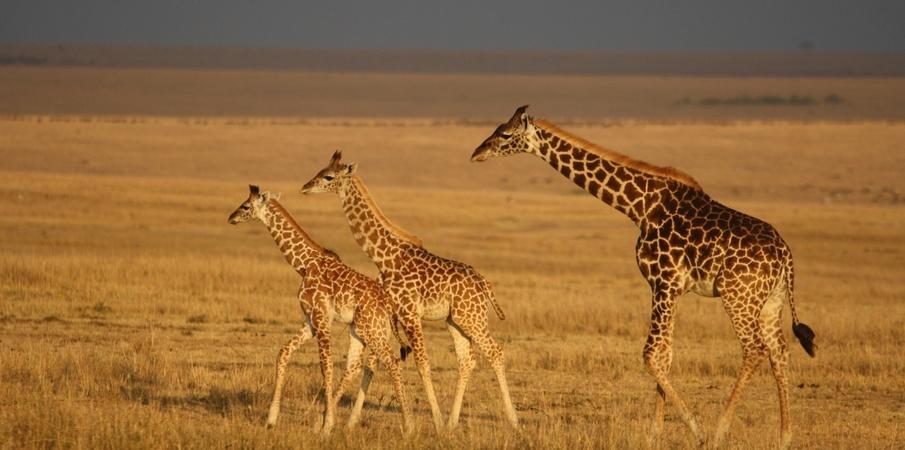Ngorongoro Crater Conservation Area
Ngorongoro Crater is located in Tanzania’s Ngorongoro Conservation Area which has over 20,000 large animals including some of Tanzania’s last remaining black rhinos, protected within its rim. Ngorongoro crater is also known as ‘the eighth wonder of the world’, a heritage center harbouring the most gorgeous wildlife ‘Shangri-la’ on earth. The Ngorongoro Crater Conservation Area (NCA) covers some 8,300 sq. kms.
Nearly three million years ago Ngorongoro crater space needled parallel to Mount Kilimanjaro as one of the highest peaks in Africa. Later it tramped down during the turbulent birth of the Rift Valley. Its volcanic top erupted at the time that ancient man first walked the plains.
Rifts and volcanoes shaped the landscape of Ngorongoro causing lava or melted rock to penetrate to the surface where it hardened building up into a volcano. In the Ngorongoro crater Conservation Area, the main rifts are north of Lake Eyasi and east of Lakes Manyara and Lake Natron, where the nine volcanoes of Ngorongoro highlands were formed during the past four million years. Of these, only volcano Oldonyo Lengai is still active.
The ash and dust from the eruptions was carried by the wind to form the fertile soils of the Serengeti plains. Ngorongoro crater is also a pioneering experiment in multiple land use because it boasts the finest blend of landscapes, wildlife, people and archaeological sites in Africa. The concept of multiple land use in conservation perspective is a deviation from a traditional approach of regarding conservation as complete absenteeism of human interference.
Wildlife in Ngorongoro Crater Conservation Area
Today, Ngorongoro’s caldera harbors the most ravishing wildlife haven on earth. The animals are not confined by the Crater walls, and can leave freely; they stay because conditions are favorable. Since most of the Crater floor is grassland, grazing animals predominate: gnu, zebra, gazelles, buffalo, eland and kongoni (Coke’s hartebeest) and warthogs.
The rich pasture and permanent water of the Crater floor supports a resident population of some 20,000 to 25,000 large mammals. The swamp and forest provide additional resources for hippos, some of Tanzania’s last remaining black rhinos, waterbucks, giant-tusked elephants, reedbucks and baboons, bushbucks, and vervets. The steep inner slopes provide a habitat for dikdiks and the rare mountain reedbuck.
Towering euphorbias adhere to the crater walls and on the floor. Fever tree and Fig tree forests give shade to an awe-inspiring array of creatures. All these animals in turn support large predators such as lions and leopards, and scavengers such as Hyenas and Jackals. For the best viewing and photography, approach the animals slowly and quietly and stay on the official tracks.
Birdlife in Ngorongoro Crater Conservation Area
Birdlife safaris at Ngorongoro crater depend intensely on the season of the year, because there are inhabitant birds and migrant birds. You are certain to see many residents, like ostriches, bustards and plovers all year round. In the wet season they share the Crater with European migrants such as White Storks, swallows, Yellow Wagtails, etc. The migrants pass through from November through May, coinciding with the rains in Africa and the winter in Eurasia.
There are also local migrants such as flamingos, storks and ducks which come and go depending on the state of the lake and ponds. Other birds you can see are Stonechat, Schalow’s Wheatear, Anteater Chat, Fiscal Shrike. Augur Buzzards, Verreaux’s Eagle and other raptors live in the Crater.
Ngorongoro Crater safari lodges are established on the rim of the crater, which is 2,235 metres (7,264 feet) above sea level. It can get quite fresh up here, and gets very cold at night in the winter months of June to August, but is opposingly hot down in the crater during the day.
Rainy Season in Ngorongoro Crater Conservation Area
It rains anytime from November to May, with the longer rains in April to May. The amount and pattern of rainfall varies and a dry period in January and February may split the rainy season into short and long rains. The forested eastern slopes get much more rain due to their elevation than the arid country to the west.
The rain arrives in stormy showers usually during afternoons and nights, which cleanses the air to reveal clear views. The weather is usually dry from June to November. July is the coldest month and highland temperatures may fall below freezing.
The Ngorongoro Crater Floor
Interpretive game drives through the emerald plains and forests of the crater floor engender guests with a respect for the people and wildlife of this world wonder. The dominant feature of the crater floor is Lake Magadi, a shallow soda lake that supports large flocks of flamingo. Much of the crater floor is open grassland, making animal spotting relatively easy: black rhino, lion, wildebeest hyena, gazelle, and zebra are all commonly seen.
Lodges and hotels around the Ngorongoro Crater .A sheer dirt road descends from Malanja Depression on the crater rim to the crater floor. At the top of the road, Masai women and children allow you to photograph them for a small fee. The hippo pool near Mandusi Swamp is a popular picnic spot. The Malanja depression is grassy open and is a good place to spot typical highland antelope such as mountain reedbuck and Kirks, dik-dik, and birds such as the striking auger buzzard and Schalows .
Popular Tanzania Wildlife Safaris Arranged by Acacia Safaris
8 Day Tanzania Wildlife Safari; The 8 Day Tanzania Wildlife Safari will make you to explore The comfortable weather and unparalleled scenic beauty with roads that run through it, littered with campgrounds and lodges, excellent year-round wildlife viewing; flocks of flamingos, silent families of giraffes, noisy packs of wild dogs, lions with no trouble finding lunch; zebras roaming around waiting for sunset. Read More…
11 Day Tanzania Wildlife Tour; The 11 Day Tanzania Wildlife Tour, With your naturalist guide, leave for Tarangire National Park, Tanzania’s third largest National Park and sanctuary to an unusually large elephant population. Majestic baobab trees are an interesting feature of the park that dwarf the animals that feed beneath them. Animals converge along the Tarangire River, Read More…
12 Day Tanzania Cultural & Nature Walk; The 12 Day Tanzania Cultural & Nature Walk Tour, With your naturalist guide, leave for Tarangire National Park, Tanzania’s third largest National Park and sanctuary for an unusually large elephant population. Majestic baobab trees are an interesting feature of the park that dwarf the animals that feed beneath them. Animals converge along the Tarangire River, which provides the only everlasting water supply. Read More…
18 Day Kilimanjaro Hiking Tour Tanzania Zanzibar Adventure safari; The 18 Day Kilimanjaro Hiking Tour Tanzania Zanzibar Adventure safari will make you explore the Best of Tanzania safari includes all of the major highlights of Tanzania – from climbing Mt. Kilimanjaro to a Lodge Safari in the Ngorongoro Crater, Serengeti and Lake Manyara. From here you proceed to relaxing on the white sandy Indian Ocean beaches of Zanzibar. You will not regret your Safari. Read More…
Most Visited Tanzania Safari Tour Destinations / Where to go for a Tanzania Wildlife Safari
With about 30% of the territory under protection, Tanzania counts 13 national parks, 16 wildlife reserves, the Ngorongoro Conservation Area, marines parks and protected areas. The Northern Circuit is the most popular for game safaris and includes Serengeti, Ngorongoro, Tarangire, Lake Manyara, Mt. Kilimanjaro.
Thousands upon thousands of wildebeest that march in mindless unison on the annual migration through the Serengeti, perhaps? Or a family of elephants wading across the wide, muddy Rufiji/Tarangire River? What about a pride of well-fed lions sunbathing on the grassy floor of the majestic Ngorongoro Crater? Certainly, it is such images that tend to spring to mind when one thinks of Tanzania. And properly so!
Tanzania, truly, is a safari destination without peer. The statistics speak for themselves: an unparalleled one-quarter of its surface area has been set aside for conservation purposes, with the world-renowned Serengeti National Park and incomprehensibly vast Selous Game Reserve heading a rich mosaic of protected areas that collectively harbor an estimated 20 percent of Africa’s large mammal population.
SERENGETI NATIONAL PARK TANZANIA; Serengeti National Park with 14,763 sq km is the largest Tanzanian park, contiguous with Kenyan Masai Mara and extending almost to Lake Victoria. Read More…
LAKE MANYARA NATIONAL PARK TANZANIA; Lake Manyara National park is one of the most popular Tanzanian parks along the Northern circuit. It is located on the ridge of the Rift Valley, with the escarpment in the western border of the park. Read More…
TARANGIRE NATIONAL PARK TANZANIA; Tarangire National Park is located along the Tarangire river, to the south of Lake Manyara. During the dry season, from August to October,Tarangire has one of the highest concentration of wildlife than any other African national park. Read More…
NGORONGORO CRATER CONSERVATION AREA; The area is located between the Serengeti and Lake Manyara. The area covers about 8.300 kms including Olduvai Gorge, Lake Ndutu and Masek and a series of volcanoes most of which are inactive. Read More…
MOUNT KILIMANJARO TANZANIA; Kilimanjaro is a giant volcano reaching an elevation of 5,895 m with Uhuru Peak. Other names for this volcano are: Kilima Dscharo, Oldoinyo Oibor (white mountain in Masai) and Kilima Njaro meaning shining mountain in Swahili. Read More…
RUBONDO ISLANDS; Visit the Rubondo Island National Park for nature walking, relaxing, fishing, boat Excursions, Bird Watching, name it. Tanzania’s tenth National Park and the only one in Lake Victoria, Rubondo Island is located in the southwest of Lake Victoria on a 240 sq. km island. Read More…
Most Popular Kenya Wildlife Safari Ideas / Kenya Safaris Tour Options
- 3 days Samburu Safari Kenya Wildlife Tour
- 6 days Maasai Mara Kenya Wildlife Safari
- 6 Days Kenya Wildlife Safari
- 7 Days African Big Five Safari Kenya Wildlife Tour
- 7 Days Kenya Wildlife Safari
- 7 Days African Big Five Safari Kenya Wildlife Tour
- 8 Day Magnificent Kenya Tours
- 8 Days Kenya Wildlife Safari / Wildebeest Migration in Kenya
- 8 Days Kenya Wildlife Safaris Tour
- 9 Day Kenya Elegant Wildlife Safari / Kenya Wildlife Safaris Tour
- 11 Days Kenya Wildlife Safari / Wildlife Safaris in Kenya
- 12 Days Kenya Wildlife Safari Tanzania Wildlife Tour
Kenya Safari Destinations / Where to go for Wildlife Safaris in Kenya?
Maasai Mara National Reserve: Masai Mara is the most famous and most visited reserve in Kenya. Since it is protected as a reserve and not as a national park, Masai Mara is not managed by Kenya Wildlife Service but by the local authorities, namely District Councils. The protection of this area, among other factors, favoured re-population of the territory by the Maasai tribes, who by virtue of the reserve status were put in charge of the reserve’s management through the District Councils. Read More…
Amboseli National Reserve Kenya: Amboseli lies immediately North West of Mt. Kilimanjaro, on the border with Tanzania. Amboseli was established as a reserve in 1968 and gazetted as a National Park in 1974. The Park covers 392 kms and forms part of the much larger 3,000 Kms Amboseli ecosystem. Large concentrations of wildlife occur here in the dry season, making Amboseli a popular tourist destination. Read More…
Samburu National Reserve Kenya: Samburu, Buffalo Springs and Shaba are the most remote and inaccessible among the popular reserves located in Northern Kenya along the banks of the Ewaso Ngiro river. Shaba, the less visited of the three, is also the largest, with a total extension of 239 km. Samburu and Buffalo Springs are similar in surface area, 165 km and 128 km respectively. The area has been traditionally inhabited by the Samburu people, a nomad paranilotic tribe closely related to the Maasai. Read More…
Lake Nakuru National Park: Lake Nakuru is a very strong alkaline lake 62 kms in extent. Since its gazetting in 1968 as a national park, both authorities and conservation organisations have kept on winning the battle to private property and human settlings, further broadening the park limits in 1968 and 1974 to its current extension of 188 kms. The park is easily accessible, since Nakuru is the fourth city in the country and the headtown of the Rift Valley. The park covers the lake and a land strip around the northern, Read More…
Aberdare National Park: Created in 1950, Aberdare National Park is located in the Central Highlands. The landscape is made by the moorland, peaks and forest of the Kinangop Plateau in the South and the Salient rain forest in the East. Read More…
Mount Kenya National Park: Mt. Kenya is an imposing extinct volcano dominating the landscape of the Kenyan Central Highlands, east of the Rift. Mt. Kenya lies about 140 km North, North-East of Nairobi with its Northern flanks across the Equator. Read More…
Kenya Safari Attractions / What to See on A Kenya Wildlife Safari?
ABERDARE RANGES; The ranges are 343 kms from Nairobi and are at an altitude of 2500-4000 ft occupying an area of 104 sq. kms. The Aberdare National Park is part of the Aberdare Mountain Range. Deep valleys, streams and rivers as well as cascading waterfalls feature in this region. Read More…
BIG FIVE; Amboseli National Park is one of Kenya’s most prevalent parks on account of the astonishing view it exhibits of nearby Mount Kilimanjaro, the world’s highest freestanding mountain. If you travel to Amboseli National Park, be sure of finding flocks of elephants with the unforgettable views of Kilimanjaro. Read More…
KENYA BEACH HOLIDAYS; This is usually the last part of your safari around Kenya. After spending time in the bush on safari, take a few days to relax on the beaches and catch a tan before heading home. Read More…
MOUNT KENYA; The region affords an excellent game viewing. Examples include the black and white Colobus and Sykes bushbuck, elephant, monkeys, buffalo, black rhino, waterbuck, genet cat and the bongo, Read More…
MOUNTAIN MERU; A commonly accepted area as the setting where Elsa, Joy Adamson’s lioness, was returned to the wild (Born Free 1960 – Written by Joy Adamson). Meru provides an astonishing combination of incomparable habitats. On the lower slopes of Mt. Kenya, Read More…
NAIROBI CITY; This is a great vacation site where you can get your films developed, wander through bookshops and send off your postcards. This Safari vacation in Nairobi is almost inevitable. Stay in Nairobi, you’ll find a town full of hustle and bustle, Read More…
WILDLIFE AND SCENERY; This is where the refreshing waters of the Ewaso Ngiro River run through Samburu and draw towards plenty of wildlife – including lions, giraffes elephants and zebras. Leopards are also regularly spotted. Read More…
THE GREAT RIFT VALLEY; Visit one of the wonders of the world on a Great Rift Valley tour. The valley forms a wide trench (about 5400 miles long) down the length of Africa that is visible from the moon. When planning to have a vacation at the Great Rift Valley in Kenya, Read More…
TREKKING SAFARIS; Maralal National Reserve is one of Kenya’s little-known treasures. Tucked away in the center of the country amidst the Ol Doinyo Lenkiyo Mountains. Maralal completely surrounds the Samburu town of the Maralal within the Reserve’s boundaries. It is one of the best places for trekking safaris, Camel safaris, and walking safaris. Read More…



